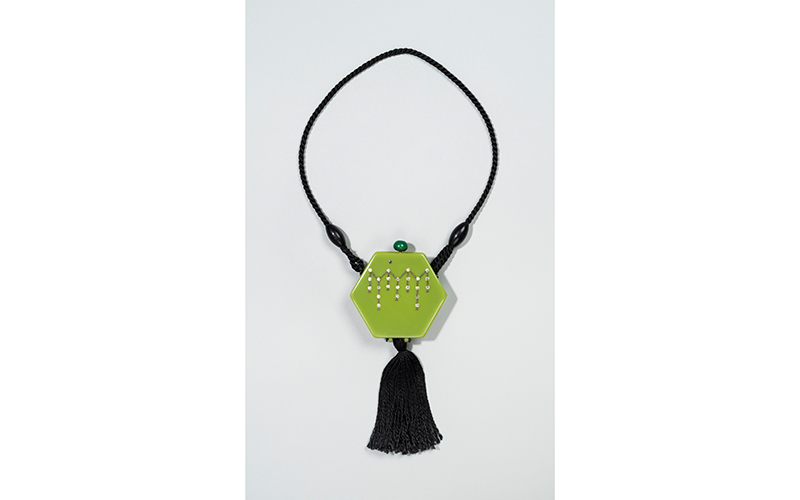- Events & Programs Home
- Calendar
- Accessibility
- Adults
-
Families & Teens
- Families & Teens Home
- 10x10 Teen Art Expo
- Art on the Rise
- Art Together: Art Making for Families with Children Ages 3–5
- Babies Sing with May Festival Minis
- Boy Scouts / Girl Scouts
- CAM Kids Day
- Family Storytime and Gallery Walk
- Family Studio: Art Making for Families with Children Ages 6–12
- Games in the Galleries
- Members-Only Baby Tours
- Public Baby Tours
- REC Reads
- Rosenthal Education Center (REC)
- Saturday Morning Art Class
- See Play Learn Kits
- Summer Camp
- Teen Fest: Zine and Comic Exchange
- RECreate
- Teachers
- Community Outreach
- Fundraisers
- Plan Your Own Event

- Events & Programs Home
- Calendar
- Accessibility
- Adults
-
Families & Teens
- Families & Teens Home
- 10x10 Teen Art Expo
- Art on the Rise
- Art Together: Art Making for Families with Children Ages 3–5
- Babies Sing with May Festival Minis
- Boy Scouts / Girl Scouts
- CAM Kids Day
- Family Storytime and Gallery Walk
- Family Studio: Art Making for Families with Children Ages 6–12
- Games in the Galleries
- Members-Only Baby Tours
- Public Baby Tours
- REC Reads
- Rosenthal Education Center (REC)
- Saturday Morning Art Class
- See Play Learn Kits
- Summer Camp
- Teen Fest: Zine and Comic Exchange
- RECreate
- Teachers
- Community Outreach
- Fundraisers
- Plan Your Own Event
Vanity Case
Vanity Case
- Home
- Plan Your Visit
- Art
-
Events & Programs
- Events & Programs Home
- Calendar
- Accessibility
- Adults
-
Families & Teens
- Families & Teens Home
- 10x10 Teen Art Expo
- Art on the Rise
- Art Together: Art Making for Families with Children Ages 3–5
- Babies Sing with May Festival Minis
- Boy Scouts / Girl Scouts
- CAM Kids Day
- Family Storytime and Gallery Walk
- Family Studio: Art Making for Families with Children Ages 6–12
- Games in the Galleries
- Members-Only Baby Tours
- Public Baby Tours
- REC Reads
- Rosenthal Education Center (REC)
- Saturday Morning Art Class
- See Play Learn Kits
- Summer Camp
- Teen Fest: Zine and Comic Exchange
- RECreate
- Teachers
- Community Outreach
- Fundraisers
- Plan Your Own Event
- Give & Join
- About
- Tickets
- Calendar
- Exhibitions
- Collections
- Blog
- Shop
- Art
- Exhibitions
- What, Me Worry? The Art and Humor of MAD Magazine
- Recall. Reframe. Respond. The Art of Paul Scott
- Rediscovered Treasures
- Special Features
- Upcoming Exhibitions
- Past Exhibitions
- Online Exhibitions
- Explore the Collection
- Provenance and Cultural Property
- Conservation
- Meet the Curators
- Digital Resources
- Art Bridges Cohort Program

Vanity Case, 1925–30, United States, plastic, silk, rhinestones, wood, metal, mirror, wool, Gift of Dr. and Mrs. Sylvan Golder, 2008.114
Verbal Description
Hello, my name is Eric Le Roy and I am the Associate Director for Docent Learning at the museum. I will be reading the verbal description for the Vanity Case in Unlocking an Art Deco Bedroom by Joseph Urban.
The museum’s Vanity Case from 1925-30 is from the United States and is plastic, silk, rhinestones, wood, metal, mirror, and wool. It was a gift from Dr. and Mrs. Sylvan Golder. The accession number is 2008.114.
Crafted in plastic, the museum’s Vanity Case is 3 ½ x 3 ¼ x ¾ inches with a 17-inch cord used as a carrying strap. Hexagon in shape, it has a light jade green lid and bottom, and the sides are black. The top is decorated with rhinestones, the closure is a dark green knob. The cord is twisted and attaches to the two sides adjacent to the closure. A long black tassel hangs off the bottom. When the case is open, there is a circular mirror, a compartment for face powder, and a powder puff.
Label Copy
Hello, my name is Eric Le Roy and I am the Associate Director for Docent Learning at the museum. I will be reading the label for the Vanity Case in Unlocking an Art Deco Bedroom by Joseph Urban.
The museum’s Vanity Case from 1925-30 is from the United States and is plastic, silk, rhinestones, wood, metal, mirror, and wool. It was a gift from Dr. and Mrs. Sylvan Golder. The accession number is 2008.114.
This plastic case, designed to be carried as a purse, contains a mirror, a compartment for face powder, and a small powder puff. Once stigmatized as a form of feminine deceit, cosmetics had ballooned into a lucrative industry by the 1920s. Surrounded by popular images of beauty in films and magazines, and highly attuned to their visibility in public, many young women of the era turned to makeup as both an act of self-fashioning and a way to meet heightened expectations of beauty. Advertisements barraged women with products for clear, youthful skin, alluring eyes, and slim figures. No longer a challenge to female respectability, cosmetics now shaped feminine norms and tied women’s self-expression closely to consumption.
Cincinnati, OH 45202
Toll Free: 1 (877) 472-4226
Museum Hours
Museum Shop
Terrace Café
Library
Cincinnati Art Museum is supported by the tens of thousands of people who give generously to the annual ArtsWave Campaign, the region's primary source for arts funding.

Free general admission to the Cincinnati Art Museum is made possible by a gift from the Rosenthal Family Foundation. Exhibition pricing may vary. Parking at the Cincinnati Art Museum is free.
Generous support for our extended Thursday hours is provided by Art Bridges Foundation’s Access for All program.

General operating support provided by:



